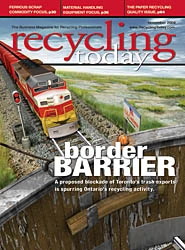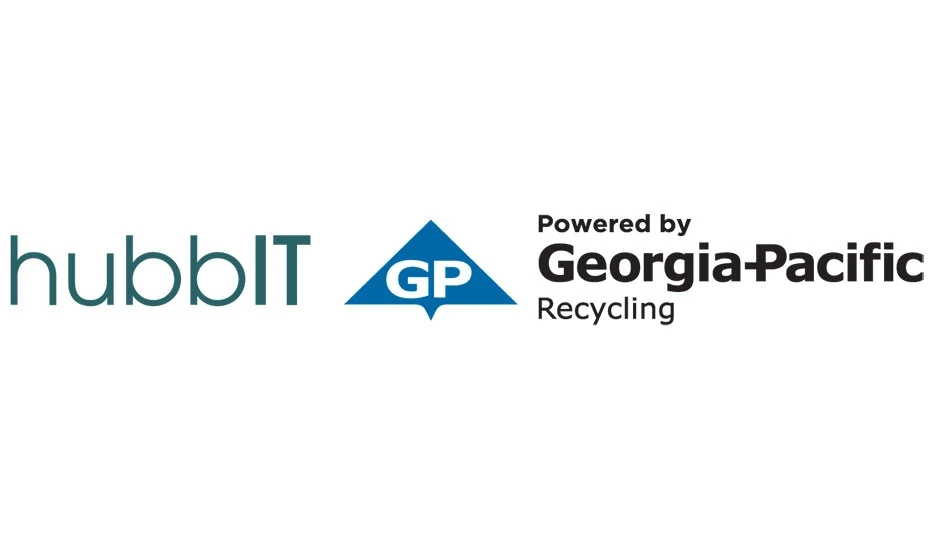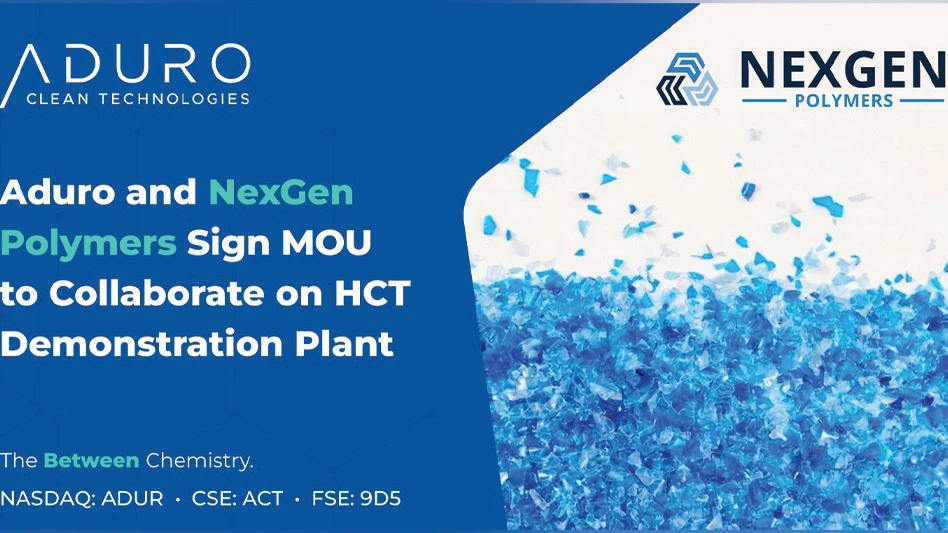The trash war between Michigan and Ontario has heated up, with lawsuits, contract disputes, and a new U.S. bill to ban Canadian trash. At issue is whether Ontario cities—Toronto being the largest—can legally send more than 1.3 million tons of trash each year to Michigan landfills now that the state has enacted extensive landfill bans to thwart the effort.
Meanwhile, manufacturers are smarting about Ontario’s Waste Diversion Act, which requires brand-owners selling more than $1.6 million worth of goods annually in Ontario to pay into a pool that will cover 50 percent of the province’s $118 million "Blue Box" curbside recycling program costs.
Fees on sales packaging have doubled since the program’s inception in February. But observers note that the vast majority of the trash being shipped to Michigan is commercial trash—untouched by the many take-back regulations in Ontario.
THE BORDER WAR. The current "trash war" between Michigan and Ontario is causing recycling regulations to be re-considered. Interestingly, the majority of the 1.3 million tons of trash moving to Michigan is commercial—untouched my most EPR laws and fees.
Toronto is exporting about 1 million tons of mostly commercial waste to Michigan landfills. However, Michigan Gov. Jennifer Granholm has signed no less than 11 new laws in 2004 that seek to restrict Toronto trash.
To do so legally, lawmakers passed new stringent landfill bans on beverage containers and tires, authorized state police inspections of loads, serious fines, notifications and a landfill expansion moratorium. This may be the most stringent landfill ban we have seen to date—and there may be some legal challenges.
In September 2004, even presidential candidate John Kerry pledged he would stop Canadian trash at the border if he were elected. Toronto has pledged to stop exporting trash by 2010 by expanding composting and recycling. However, pressure has continued to mount well before that year arrives.
As the problem with Toronto’s need to ship trash to Michigan heats up, the city has no immediate "Plan B" if the state effectively stops trucks at the border—and there is more than 1 million tons of trash at stake. The city will claim its trash is free of the items Michigan wants banned, such as yard waste, soda cans and tires.
As of mid-October, a federal judge had postponed imposition of the Michigan law until the end of the month, to be sure it is constitutional. Press reports indicate the city is looking to the province of Ontario to open landfills if the border closes, while the Minister of the Environment is charging that it is not the province’s responsibility. It is unclear if the United States can completely close its borders to Canadian trash because of the North American Free Trade Agreement.
The city says its long-term goal is to divert 100 percent of its trash from landfills by 2010, recycling what it can and discovering and implementing a new technology to handle the rest.
Thus, even though Canadian local governments understandably don’t like Americans meddling in their affairs, if American companies and states are being required to pay for an inefficient provincial system, and to accept unwanted trash, there will continue to be serious debates, complaints and potential lawsuits.
RETAIL SCRUTINY. Canada has a long history of "producer responsibility" programs, starting with the provincial bottle deposit programs. Today, there are about 29 local EPR programs in Canada—none are national. They affect everything from used oil to paint to tires to pharmaceuticals to gas.
Ontario and Manitoba are the only provinces with no bottle deposits. Ontario, which has a detailed curbside mandate on the books for cities, has enacted a number of laws over the years in an effort to increase recycling, though none have been enforced on manufacturers. In 2002, after 10 years of proposals and politicking, the nation’s largest province passed a law requiring industry to fund 50 percent of Blue Box costs.
The Waste Diversion Act created Stewardship Ontario (SO), which is now collecting weight-based packaging fees on sales packaging for the first time in North America. However, major brand owners were not aware these would be weight-based fees, and many have now rebelled. Moreover, the law had no provision for a cap on what these "costs" would be. The total "cost" for the Blue Box program grew from about $60 million to $118 million for 2005. SO had to double many of its fees from what they were at the beginning of 2004.
Quebec has a similar law to Ontario’s, though it has not implemented its fee system as of October 2004. Quebec has a deposit on soft drinks and beer. It does not have such a proscriptive curbside mandate, but costs per kilogram could be a bit higher because there is no aluminum income, observers say. Fee information will not be known until perhaps early 2005.
Meanwhile, a recent report from EPIC Canada has found that Canadians are recycling 36 percent of their PET and HDPE bottles, higher than the 22 percent in the United States. This is because of expanded deposits in most provinces. But "away-from-home" consumption of beverages has grown to 63 percent of beverage container use.
SHADES OF GREEN. While it looks like Canadians—when given the right incentives, education and financed programs—are more "green" than Americans and will recycle more, Canada is not actually recycling at a much higher rate than the United States.
Recycling policies affecting manufacturers seem to suffer from a number of factors in Canada:
• Reluctance and constitutional restrictions of the federal gov-
ernment to step in to push for national programs where
nationally/internationally designed and produced products
are involved, leaving all "producer responsibility" policies up to
the provinces, based on existing laws for solid waste.
• Turnover in provincial government control with different
elections, which has in some cases lead to a string of laws that either encourage inefficiency or are not enforced or may
level too many costs unfairly on one sector (as with beverage fees).
• Reluctance of provincial governments to interfere with recycling programs in individual municipalities.
The development of programs in Ontario has some similarities with Wisconsin. Wisconsin placed a tax on businesses to fund recycling in 1991. Instead of requiring cities to collaborate with each other, it allowed any city to be a "responsible party." Thus, instead of getting about 30 applications for reimbursement, it ended up with about 1,200. Without economies of scale, the costs escalated in the smaller towns. There was no incentive for efficiency.
|
PROVINCIAL PREFERENCES |
|
Canadian provinces have a variety of laws in place to cover the handling of some recyclable end-of-life products. TIRES: Many Canadian provinces have made progress on tire recovery because of fees imposed to fund programs. Alberta, Nova Scotia, Quebec and Saskatchewan all have recovery rates in excess of 70 percent. USED OIL: Most provinces have used oil recovery programs and many assess fees to fund them at various levels. Alberta reports recovering 50 percent, while recovery in Ontario and Quebec is 75 percent and 80 percent. How the oil should be used at end of life is sometimes debated. BATTERIES: Most provinces do not yet have a mandatory battery recycling law, though there is a national voluntary system for rechargeable batteries, similar to the system in the United States This may change as provinces move to EPR laws. ELECTRONICS: While major brand owners have agreed there should be a fee on cathode ray tubes and have formed a group to negotiate with provinces, it appears the provinces want industry to fund 100 percent of the bill in most cases. Alberta has already set up a hefty fee on certain electronics to fund its new program. PAINT: Six provinces either require or have voluntary paint take-back programs. British Columbia’s appears to be the most stringent. |
Ontario cities are required to have a curbside program if the population is greater than 5,000. The initial provincial reimbursement program apparently had no incentive for cooperation, so the province now has about 70 material recovery facilities, when it only needs about 20 to 30 facilities. The province has no plans presently to amend this situation.
Privately, Canadian officials acknowledge there is not much they can do to improve efficiency because of the politics of local governments.
Whether other provinces—with the exception of perhaps Manitoba—will copy Ontario’s 50 percent fee solution is dubious at present.
On the commercial mandatory recycling side, all manufacturers and office buildings in Ontario must separate their recyclables. Items to be recycled by office buildings include: OCC, fine paper, newsprint, aluminum, ferrous and glass. Manufacturers must recycle all of the above as well as wood pallets. Waste generator source separation in the southern Ontario ICI (industrial, commercial and institutional) sectors (excluding C&D) had to comply with all regulations by 1995.
Some of the definitions of ICI waste generators have changed with the amended regulations. They include: restaurants with gross sales of more than $5 million in any one year (originally it was restaurants with 10 or more employees) and manufacturing businesses with greater than 16,000 employee hours in any one month (the former designation for manufacturers was establishments with 100 or more employees).
The regulations also affect office buildings, schools, hospitals, hotels and motels, multi-unit residential dwellings with six or more units and shopping centers.
Commercial waste generators must perform waste audits and provide work plans on how they intend to follow the three regulations. The regulations were amended to allow companies to continue to use private haulers.
Businesses in Ontario are required to recycle and were required to submit waste reduction work plans and audits in 1994. ICI waste generators were supposed to implement waste audits and reduction work plans by 1994.
Even with these regulations in place, Ontario recycling rates are not reaching world-leading heights. A lack of enforcement on the commercial recycling side and scant attention to the packaging audits are widely cited as reasons. In 2002, about 2.8 million metric tons of solid waste generated by the residential and IC&I sectors was managed through 3Rs activities, equivalent to about 28 percent of the total. This included 1.2 million metric tons of residential material and 1.6 million metric tons of ICI material.
The author is publisher of State Recycling Laws Update, College Park, Md., www.raymond.com, and can be contacted at michele@raymond.com. This article is excerpted from Raymond Communication Inc.’s "Canadian Recycling Policy: The Complete Guide for Product Makers," just published in October.
Get curated news on YOUR industry.
Enter your email to receive our newsletters.

Explore the November 2004 Issue
Check out more from this issue and find your next story to read.
Latest from Recycling Today
- ReMA opposes European efforts seeking export restrictions for recyclables
- Fresh Perspective: Raj Bagaria
- Saica announces plans for second US site
- Update: Novelis produces first aluminum coil made fully from recycled end-of-life automotive scrap
- Aimplas doubles online course offerings
- Radius to be acquired by Toyota subsidiary
- Algoma EAF to start in April
- Erema sees strong demand for high-volume PET systems





